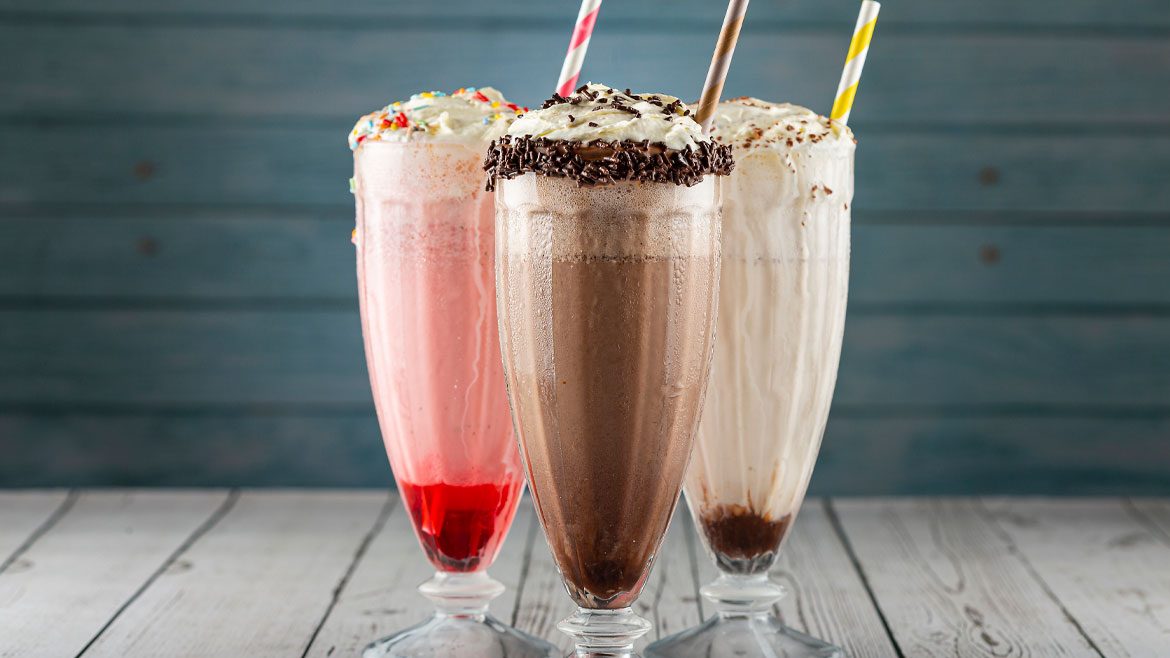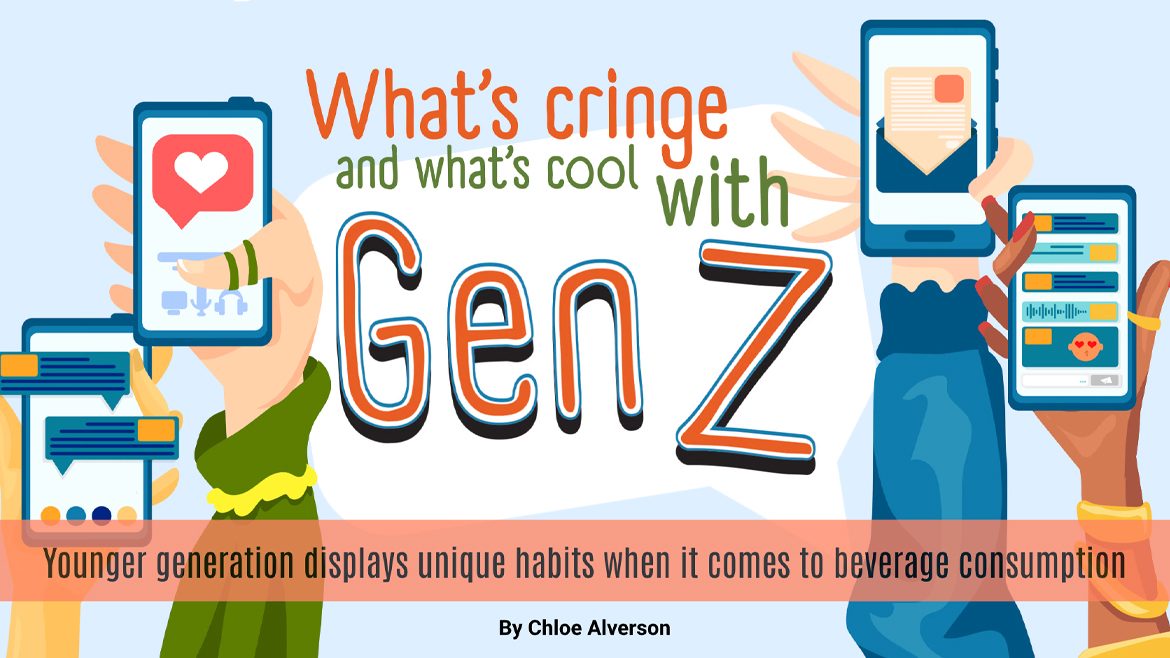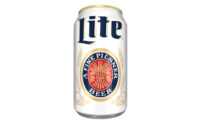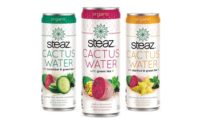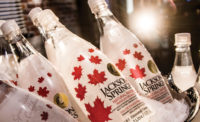![]()
Color Your World
Natural colors gain popularity in beverage formulation
by Jennifer Korolishin
Supermarket shelves are
alive with color, especially in the beverage
aisle, where bright blue sports drinks, vibrant red juices and brilliant
orange and yellow sodas compete for consumers' attention.
“The old adage is that Americans buy with their
eyes,” says Owen Parker, vice president of research and development
at D.D. Williamson, Louisville, Ky., one of the largest producers of
caramel color. “Colors attract us, so when we go to any shelf in the
grocery store, one of the things we do to perceive what a product will
taste like is look at the color.”
Evolving technology has expanded the range of color
choices available to beverage-makers, enabling a wide variety of new
formulation options to keep up with ever-changing consumer preferences.
While both natural and synthetic colors are widely
used in everything from colas to energy drinks, beverage-makers are turning
increasingly to natural colors as they develop both new products and line
extensions.
“The biggest trend is toward natural
products,” says Parker. “In Europe right now it's even more
apparent, as food purity is a very big concern there.”
Natural vs. synthetic
A number of factors influence the decision to use
natural colors. Synthetic colors remain popular, especially the commonly
used FD&C colors Red #40, Yellow #5, Yellow #6 and Blue #1. However,
synthetic colors pose some challenges. They are more difficult to produce
and use, and each batch must be certified by the Food and Drug
Administration. Synthetic colors may be used in amounts consistent with
good manufacturing practices, but cannot be used in foods and beverages for
which there is an established standard of identity (unless added color is
specifically authorized by the standard).
Natural colors, typically manufactured from fruits and vegetables without added chemicals, don't have as strong
a regulatory impact. The FDA does not actually recognize the term
“natural color”; instead, what the beverage and food industry
considers natural colors are “exempt from certification” in FDA
terms. Still, even though these exempt colors are derived from natural
sources, beverage-makers must identify them as an additive on the label in
one of several FDA-specified ways.
The use of natural colors is also a powerful selling
tool in today's marketplace. “Because there's a high demand for
natural products, the advantage is that you can use as a marketing tool the
fact that the product is all natural, no synthetic color added,” says
Stefan Hake, general manager of GNT USA Inc., Tarrytown, N.Y., a natural
food coloring manufacturer.
Natural colors can enhance a beverage's appeal to
health-conscious consumers, but it can also affect a product's placement on
store shelves. Natural food retailers such as Whole Foods and Wild Oats do
not carry any products that contain synthetic ingredients, so the makers of
nutraceuticals, energy drinks other beverages that wish to sell to those
chains must ensure that only natural colors are used.
But natural colors have inherent challenges, as well.
“First, [natural colors] are going to be typically more expensive to
use than synthetic colors,” says Byron Madkins, director of
applications for food and beverage for natural ingredient solution
developer Chr. Hansen, Milwaukee, Wis. “The second thing is
stability. That's been a challenge for years, trying to figure out ways to
make natural colors as stable or more stable than their synthetic
counterparts.”
Both challenges are being addressed. As the supply of
natural colors has increased during the past 10 to 15 years, the price
difference between natural and synthetic colors has diminished, making cost
less of a barrier for beverage-makers.
Processes such as emulsification and
microencapsulation are now used more frequently to improve the stability of
natural colors. Stability also depends on the way color is used in a
particular product. While synthetic red colors are used frequently in
beverages, in some cases, natural carmine and cochineal products can
produce a more stable red color.
“Natural color manufacturers have really done
their homework in the area of reducing the cost and delivering more stable
products and being able to deliver, especially in the red area, a nice,
stable, red color that outlasts the shelf life of the actual
beverage,” says Hake.
Stability is critical in producing a beverage color
that consistently attracts consumers, particularly in cases where a product
may fade or discolor over time without added color.
“If you go into a store and you see a 10 percent
strawberry juice, the one that still looks like a strawberry is the one
you're going to take off the shelf,” says Hake. “If it looks a
little bit brown, you think it's been on the shelf a little bit, it
probably doesn't taste that good. To get your drink off the shelf, the
product has to appeal to the end consumer.”
Madkins also notes that some beverage-makers turn
to natural colors to achieve a greater color range. “Believe it or
not, they end up exhausting the possibilities that you can get with
synthetic colors. You almost need to bring some more crayons to the box.
Natural colors can do that because you're able to achieve some different
hues that you simply cannot get with just Red #40, Yellow #5 and Yellow
#6.”
Choosing a color
Because natural colors were traditionally thought of
as being unstable and difficult to work with, beverage-makers often focus
on flavors first, considering color closer to the completion of the
formulation process.
“Color is probably the first and most important
thing that anybody sees — it's what differentiates one product from
another and gives the consumer an idea of what they're about to
taste,” says Parker. “Yet, usually, it's one of the last things
that goes into making a beverage.”
Caramel remains a leading beverage color, used in
carbonated soft drinks including colas, root beer and ginger ale, because
it withstands pH much better than other colors; it is also used in other
brown-hued drinks like beer and coffee and tea-based beverages. Other
common natural sources include annatto, carmine and cochineal extract,
turmeric, titanium dioxide and beta carotene. Anthocyanins from grape and
beet extract are being used more commonly by beverage makers. Anthocyanins
possess antioxidant properties, as well, making them a popular color source
for nutraceuticals and other health-conscious beverage products.
“We're always looking for new things, like if we
can extract anthocyanins from grapes for one thing and beets for
another,” says Parker. “Now we're looking at some of the
extracts from tomatoes, strawberries, black currants and black
carrots.”
In choosing a color, beverage-makers must take into
account how colors interact with the ingredients in the beverage, as well
as the concentration needed to achieve the desired color and the pH of the
final product.
“The challenging part [of the formulation
process] is the technical part—are there any ingredients in there
that can potentially react with the color? Is there ascorbic acid? Are
there vitamins or salts in the product?” says Madkins. “These
are the things that can interact with different colors in different ways,
so those are all the things we take into account when recommending the best
color for a product.”
The ingredient mix plays a critical role in a color's
stability or degradation in a beverage. “One example is ascorbic
acid, which tends to accelerate the degradation of Red #40, Yellow #5,
Yellow #6 and anthocyanins,” says Susan Brunjes, chemist, natural
colors, for Sensient Technologies Corp., St. Louis, a manufacturer of
colors, flavors and fragrances. “However, it generally enhances the
stability of beta-carotene and cochineal extract. Flavors may also
contain components which can interact with colorants and cause
degradation.”
A beverage's inherent properties can also dramatically
affect color. “Micro-organisms are generally a concern with azo dyes
(such as Red #40) when used in dairy products and dairy-containing
beverages,” says Brunjes. “The N=N azo bonds are susceptible to
breakage by micro-organisms present in these type of products.”
To determine how a color will interact with various ingredients and whether those reactions could
potentially increase or decrease color loss over the life of a product,
color manufacturers work with beverage-makers on an extensive testing
process. Color dilutions are tested at different concentrations and with
different ingredients, and are read on a spectrophotometer to determine how
intense the color will be in the final solution.
“We would always recommend that beverage
companies work with somebody who manufactures the color, who can give you a
certificate of analysis and who has food scientists on staff that can do
the actual stability testing for you because it is not possible to predict
and say this color works in all beverages,” says Hake.
Additionally, packaging influences color choices,
since the shape of a bottle and the label can affect how light passes
through the package. Whether the bottle is glass or plastic can also shape
how the consumer perceives the color of a
beverage as well as the stability of the product.
Vibrant colors were once solely the province of
synthetic colors, but technological improvements now allow for more vivid
natural colors, particularly in the red family. However, some colors, such
as a brilliant blue or green, remain unachievable naturally.
Combining natural and synthetic colors to produce new
or more brilliant colors has been a successful endeavor for color
manufacturers like Chr. Hansen. This approach is based partially on
customer demand, but also on the fact that as families of products come of
age, it can become a challenge to maintain shelf life and the integrity of
the ingredients and colors.
“We've been finding that maybe Red #40 by itself
will fade in a certain way or maybe an anthocyanin will fade in a certain
way, but together they can actually provide a little better stability than
by themselves,” says Madkins. “We're also using that to our
advantage in terms of achieving different shades that you cannot get solely
with synthetic colors or solely with natural colors.”
Future trends
While no one color stands out as the year's most
popular, it appears that vibrant colors such as pink, purple, orange and
green will continue to appear with increasing frequency in beverages
marketed to adults and kids.
“As we've become a world culture, we see that
other people do things differently than what we're used to,” says
Parker. “I think [the use of vivid colors] is partially due to some
of the fruits that we see now in our grocery stores — we have a much
wider taste and variety today, which spurs these new and different colors
and different beverages and different tastes.”
Due to strict FDA regulations, colors that can truly
be considered “new” do not appear with any regularity in the
beverage industry. In fact, during the past century, the number of
synthetic colors on the market has decreased as some, such as Red #2, were
found to be unsafe. Instead, color manufacturers are seeking tomorrow's
most popular colors through a variety of methods.
“What you will see are formulation advances.
You'll see formulating colors with antioxidants or formulating them with
protective ingredients that will mask or keep the color from being attacked
by reducing agents or salts or oxidizing agents or things that we know will
cause the color to break down,” says Madkins. “You'll see
different synergies on the natural color side. Within certain product
families we've been finding that as they're blended in certain ways, the
combination of ingredients improves
stability.”
